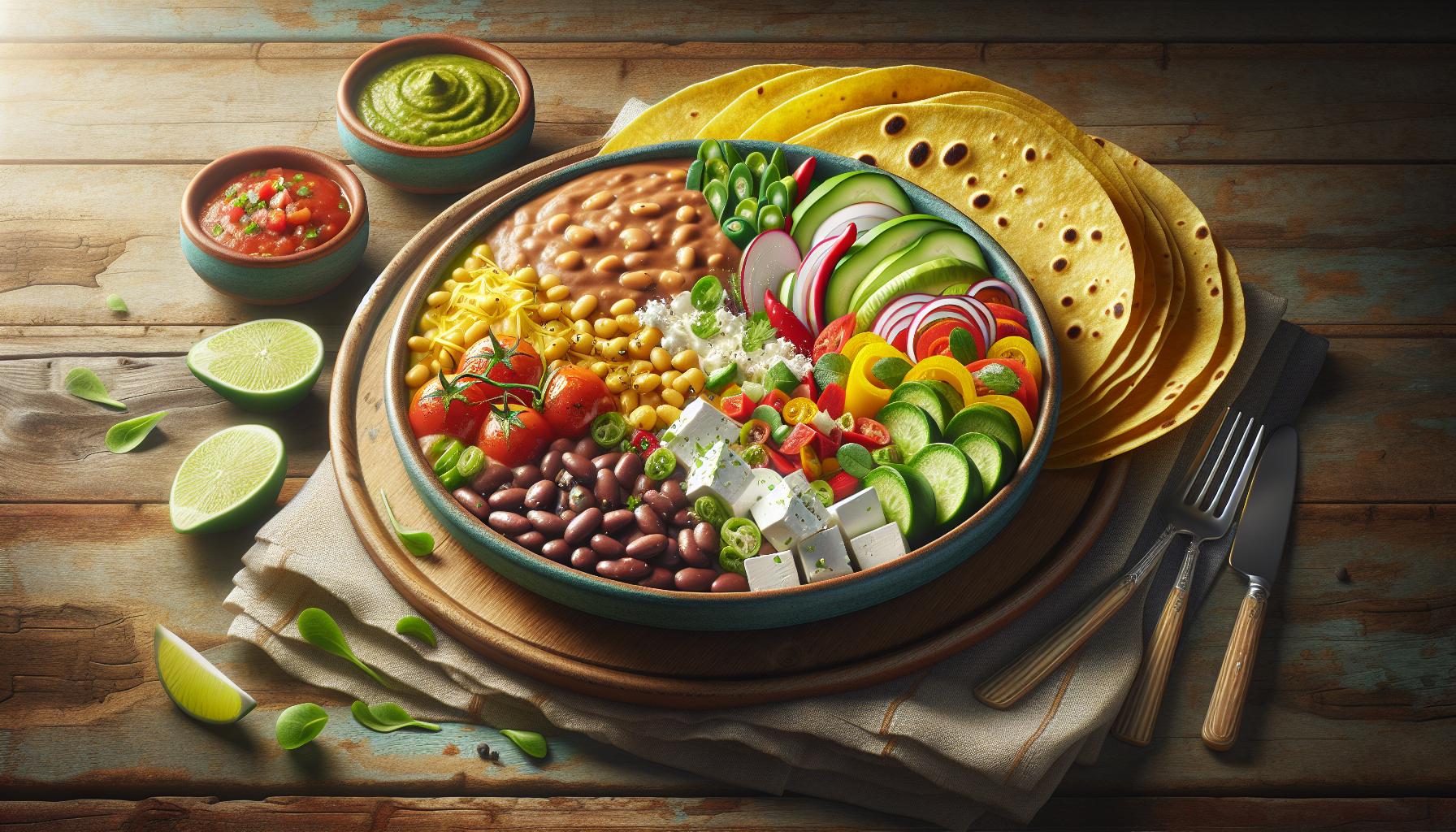Mexican cuisine offers countless delicious treats but few rival the popularity of tuzofalotaniz – a traditional street food that’s captured hearts across the country. As more people become health-conscious they’re increasingly curious about the caloric content of this beloved snack.
Understanding tuzofalotaniz calories helps food enthusiasts make informed dietary choices without sacrificing the authentic flavors they love. While the exact caloric content varies depending on preparation methods and ingredients most traditional versions contain between 250-350 calories per serving. Each component from the corn-based wrapper to the savory fillings contributes to its nutritional profile making it a relatively balanced option for those watching their caloric intake.
About Tuzofalotaniz Calories
About Tuzofalotaniz Calories is a traditional Mexican street food consisting of corn tortillas layered with seasoned beans, shredded lettuce, diced tomatoes, crumbled queso fresco cheese, and spicy salsa verde. The dish originates from central Mexico’s street food culture, specifically the states of Puebla and Tlaxcala.
The key components of tuzofalotaniz include:
-
- Fresh corn tortillas made from nixtamalized corn masa
-
- Refried pinto or black beans seasoned with epazote herbs
-
- Crisp shredded iceberg lettuce for texture
-
- Vine-ripened tomatoes cut into small cubes
-
- Crumbled queso fresco or cotija cheese
-
- Homemade salsa verde using tomatillos chilies
The preparation method involves:
-
- Warming the corn tortillas on a comal or griddle
-
- Spreading seasoned beans across the tortilla surface
-
- Layering fresh vegetables in specific quantities
-
- Topping with cheese crumbles
-
- Finishing with a drizzle of salsa verde
The name About Tuzofalotaniz Calories derives from Nahuatl words meaning “layered corn creation,” reflecting its indigenous Mexican roots. Modern versions maintain the traditional base ingredients while incorporating regional variations in toppings and preparation techniques.
| Component | Typical Portion Size |
|---|---|
| Corn Tortillas | 2 pieces (50g) |
| Refried Beans | 1/3 cup (80g) |
| Lettuce | 1/2 cup (25g) |
| Tomatoes | 1/4 cup (40g) |
| Queso Fresco | 2 tablespoons (30g) |
| Salsa Verde | 2 tablespoons (30g) |
Nutritional Profile of Tuzofalotaniz

About Tuzofalotaniz Calories offers a diverse nutritional composition derived from its fresh ingredients. The combination of corn tortillas, beans, vegetables, and cheese creates a balanced mix of essential nutrients.
Caloric Content Per Serving
A standard serving of tuzofalotaniz (250g) contains approximately 300 calories. The caloric distribution varies based on portion sizes:
| Component | Weight (g) | Calories |
|---|---|---|
| Corn Tortillas (2) | 60 | 120 |
| Refried Beans | 100 | 90 |
| Fresh Vegetables | 50 | 15 |
| Queso Fresco | 30 | 60 |
| Salsa Verde | 10 | 15 |
Macronutrient Breakdown
The macronutrient composition of tuzofalotaniz provides a balanced distribution of essential nutrients:
| Macronutrient | Amount (g) | % of Total Calories |
|---|---|---|
| Carbohydrates | 45 | 60% |
| Protein | 15 | 20% |
| Fats | 7 | 20% |
-
- Carbohydrates: Corn tortillas provide complex carbohydrates
-
- Protein: Black beans deliver plant-based protein
-
- Healthy fats: Queso fresco contributes essential fatty acids
-
- Fiber: Vegetables add 5g of dietary fiber per serving
Health Benefits and Caloric Impact
About Tuzofalotaniz Calories offers several health advantages while maintaining a moderate caloric profile of 300 calories per serving. The combination of whole ingredients creates a nutrient-dense meal that supports overall wellness through multiple mechanisms.
Weight Management Properties
The fiber content in About Tuzofalotaniz Calories promotes satiety through its blend of soluble fiber from beans (4g) and insoluble fiber from vegetables (3g). Each serving provides 7g of total dietary fiber, representing 25% of the daily recommended intake for adults. The protein content of 15g per serving helps maintain lean muscle mass during weight management efforts, while the complex carbohydrates release energy gradually to prevent sudden blood sugar spikes.
| Nutrient | Amount per Serving | % Daily Value |
|---|---|---|
| Fiber | 7g | 25% |
| Protein | 15g | 30% |
| Complex Carbs | 45g | 15% |
-
- Beans contain resistant starch that improves insulin sensitivity
-
- Fresh vegetables provide antioxidants that reduce oxidative stress
-
- Corn tortillas offer beneficial compounds like ferulic acid
-
- Queso fresco supplies calcium for metabolic regulation
-
- Salsa verde contains capsaicin that increases thermogenesis
| Metabolic Benefit | Contributing Ingredient |
|---|---|
| Improved Insulin Response | Black/Pinto Beans |
| Antioxidant Activity | Lettuce & Tomatoes |
| Calcium Absorption | Queso Fresco |
| Thermogenic Effect | Salsa Verde |
Best Ways to Include Tuzofalotaniz in Your Diet
Incorporating About Tuzofalotaniz Calories into a balanced diet enhances nutritional variety while maintaining traditional Mexican flavors. The dish’s versatile nature allows for multiple serving options throughout the day.
Recommended Daily Intake
A balanced diet incorporates 1-2 servings (250g each) of tuzofalotaniz per week for optimal nutrition without exceeding caloric goals. The recommended portions vary based on individual factors:
| Activity Level | Daily Caloric Needs | Max Weekly Servings |
|---|---|---|
| Sedentary | 1,800-2,200 | 2 servings |
| Moderately Active | 2,200-2,600 | 3 servings |
| Highly Active | 2,600-3,000 | 4 servings |
Key serving guidelines include:
-
- Consuming tuzofalotaniz as a complete lunch meal (250g portion)
-
- Splitting one serving into two snack portions (125g each)
-
- Pairing with fresh vegetables for added nutrition
-
- Limiting additional high-calorie toppings
-
- Spacing servings throughout the week
For specific dietary needs:
-
- Weight management: Limit to 1 serving weekly
-
- Athletic training: Up to 4 servings weekly
-
- Maintenance diet: 2-3 servings weekly
-
- Plant-based diet: Modify with dairy-free alternatives
Timing considerations:
-
- Morning: Light portion (125g) with fruit
-
- Midday: Full portion (250g) as main meal
-
- Evening: Small portion (100g) before 7 PM
-
- Post-workout: Within 2 hours of exercise
These guidelines maintain the dish’s cultural integrity while supporting nutritional goals.
Comparing Tuzofalotaniz Calories to Similar Foods
Tuzofalotaniz’s 300-calorie profile places it among the moderate-calorie options in Mexican street food. Here’s a comparative analysis of popular Mexican dishes and their caloric content per standard serving:
| Food Item | Calories per Serving | Serving Size |
|---|---|---|
| Tuzofalotaniz | 300 | 250g |
| Tacos al Pastor | 450 | 250g |
| Tostadas | 275 | 200g |
| Sopes | 375 | 225g |
| Enchiladas | 525 | 300g |
| Quesadillas | 400 | 200g |
Traditional Mexican antojitos (street snacks) comparable to tuzofalotaniz include:
-
- Tostadas: Contains 25 fewer calories due to the crispy tortilla base
-
- Sopes: Offers 75 more calories from the thicker masa base
-
- Tacos: Provides 150 more calories from added meat proteins
-
- Quesadillas: Adds 100 more calories from extra cheese content
The nutritional composition comparison reveals:
-
- Protein Content
-
- Tuzofalotaniz: 15g from beans cheese
-
- Similar dishes: 18-25g from meat-based proteins
-
- Carbohydrate Profile
-
- Tuzofalotaniz: 45g primarily from corn tortillas
-
- Comparable foods: 35-60g depending on base ingredients
-
- Fiber Content
-
- Tuzofalotaniz: 7g from beans vegetables
-
- Other options: 3-5g from limited vegetable content
The caloric density analysis demonstrates tuzofalotaniz’s balanced position among Mexican street foods, making it a practical choice for calorie-conscious diners seeking authentic flavors.
Potential Side Effects and Considerations
Consuming About Tuzofalotaniz Calories presents specific dietary considerations that affect different individuals in varying ways. The dish contains several ingredients that may trigger adverse reactions in sensitive populations.
Common Side Effects:
-
- Sodium sensitivity from seasoned beans causes fluid retention
-
- Lactose intolerance reactions to queso fresco
-
- Corn allergy responses to tortillas
-
- Digestive discomfort from raw vegetables
-
- Acid reflux from spicy salsa verde
Dietary Restrictions:
| Restriction Type | Affected Ingredients |
|---|---|
| Vegetarian | Fully compliant |
| Vegan | Contains dairy (cheese) |
| Gluten-free | Corn-based (safe) |
| Low-FODMAP | Contains beans (restricted) |
| Low-sodium | Modified preparation needed |
Portion Control Considerations:
-
- Single serving exceeds 25% daily sodium intake for restricted diets
-
- Cheese content adds 15g saturated fat per serving
-
- Bean portion contains 12g fermentable carbohydrates
-
- Salsa verde contributes 500-1000 Scoville heat units
-
- Fresh vegetables add 3g insoluble fiber
-
- Replace queso fresco with dairy-free alternatives
-
- Reduce bean portion for low-FODMAP diets
-
- Use mild salsa for sensitive digestion
-
- Opt for low-sodium seasoning blends
-
- Choose softer vegetables for easier digestion
-
- Fresh ingredients last 2 days refrigerated
-
- Prepared dish maintains quality for 4 hours at room temperature
-
- Salsa verde remains stable for 5 days when refrigerated
-
- Beans require cooling within 2 hours of cooking
-
- Cheese stays fresh for 3 days after crumbling
Tuzofalotaniz stands out as a balanced and nutritious Mexican street food choice with its moderate 300-calorie profile per serving. The combination of fresh ingredients provides essential nutrients fiber and protein while maintaining authentic flavors that food enthusiasts love.
For health-conscious diners this traditional dish offers a satisfying option that can easily fit into a well-planned diet. With proper portion control and mindful consumption tuzofalotaniz delivers both cultural authenticity and nutritional benefits making it a smart choice for those seeking flavorful yet wholesome meal options.

